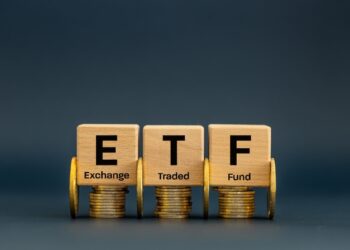The arguments for index funds are not difficult to find, particularly during times of unprecedented growth in equities markets, such as what we are currently experiencing here in Australia.
Many investors are starting to follow the ‘core and satellite’ portfolio construction technique, now firmly established among institutional investors, which clearly delineates the alpha returns from the beta.
The key to this approach is to keep the cost and administrative requirements of the beta returns as low as possible. An index fund’s main role in this style of actively managed portfolio is to produce the ‘core’ or beta returns.
Exchange-traded funds (ETFs) provide investors with one of the cheapest, most tax effective and administratively simple index funds available, so it’s not surprising that they are receiving broader interest from investors as a simple way to capture beta.
Separating alpha from beta: the core and satellite approach
Alpha is defined as excess return attributable to an active manager, and beta refers to the return of an underlying benchmark. The benefits of separating the responsibilities for alpha and beta generation are compelling.
> Greater alpha production from active managers — removing constraints that inhibit alpha generation, including the responsibility for beta production (remaining close to a benchmark), and barriers to taking positions on both the short side and outside the benchmark’s universe of securities.
> Better and more cost effective beta production — gaining complete market exposure at the lowest possible cost.
> Reducing implementation costs — compensating alpha and beta managers in a manner consistent with their roles, and reducing transaction costs and volume.
The central component of the core and satellite approach is to invest a core part of your portfolio, for example, a portion of your Australian equities or listed property trust exposure, in a passively managed strategy, which aims to deliver the market or beta return at minimum cost.
More aggressive actively managed (and more expensive) strategies are then employed to deliver the increasingly elusive alpha return, that is, the additional value over market returns delivered through manager skill.
While buying units in an unlisted managed index fund is one way to capture this beta, a cheaper alternative is to invest in an ETF listed on the Australian Securities Exchange (ASX).
A global phenomenon
Over the past decade, ETFs have become a global phenomenon representing around $472 billion across more than 527 individual funds.
ETFs are fast becoming an important trading, risk management and investment instrument used by institutional investors, hedge fund managers, arbitrageurs, traders, market makers, financial advisers and individual investors.
Much of their popularity can be attributed to three factors: low cost; lower turnover; and competitive performance when compared to actively managed funds.
According to recent figures released by the ASX, ETF trading has almost doubled in the past 12 months. The May 2007 Listed Managed Investment (LMI) Update showed average monthly trades had grown from 1,072 in May 2006 to 1,688 in May 2007.
The funds are gaining broad popularity as investors and planners better understand the benefits of the product.
Benefits for investors
ETFs provide a compelling diversification tool and are well-suited to direct vehicles such as self-managed super funds (SMSF) due to their low cost, low maintenance structure.
Due to their simple structure, ETFs are able to provide real scale to a portfolio, providing instant diversification across the Australian equities market in a single transaction.
According to research house Aegis, fund managers have long understood the advantages of using ETFs, however, the retail market has yet to completely understand the benefits. In its report on exchange traded funds (October 2005), Aegis said the advantages that can be gained from adding ETFs to individual portfolios include:
> Transparency — information regarding the underlying portfolio of securities is made available via the ASX website each day for each ETF. This also means the transparency can extend through to the price of the ETF;
> Diversification with low transaction costs — An ETF provides diversification across the breadth of the index;
> Portfolio construction — traditional index-linked ETFs could be considered as a core investment in portfolio construction given their low cost exposure to an underlying index. For investors with lower amounts of money, ETFs are a cost effective means of gaining market exposure;
> Simplification of performance — the performance of the ETF can easily be identified to the headline index performance that is reported in most media;
> Cost — ETFs generally have lower management expense ratios and no performance fees as they are less expensive to operate than traditional active equity portfolios; and
> Tax efficiency — ETFs are low turnover investments, with changes only being made when the underlying index changes its composition. This means that potentially less realised capital gains will be passed through to investors. ETFs also provide a consolidated tax statement at the end of the financial year, making them attractive to SMSFs and other investors by saving on large volumes of paperwork.
Susan Darroch is head of global structured products at State StreetGlobal Advisors Australia .





